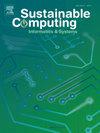Hybrid AI framework for detecting cyberattacks and predicting cascading failures in power systems
IF 5.7
3区 计算机科学
Q1 COMPUTER SCIENCE, HARDWARE & ARCHITECTURE
引用次数: 0
Abstract
The power grid is a critical infrastructure, relies on Supervisory Control and Data Acquisition (SCADA), a computer-based system for real-time monitoring and control of the grid. However, these systems are increasingly being targeted by cyberattackers, posing significant risks to grid stability and security. Existing security solutions focus on either attack detection by verifying their signatures or predicting their cascading failure to isolate the failed component from the rest of the working components. In the current paper, our objective is to detect new or existing attacks and predict their cascading failure. This research accomplish the objective by introducing a new multi-model framework that combines three models, XGBoost, Transformer, and Graph Neural Networks (GNNs), to identify both known and unknown cyberattacks with forecast their cascading impacts on power grid systems. The XGBoost model detects the known attack patterns, which includes Data Injection, Remote Tripping Command Injection, Relay Setting Change Attacks. The Transformer model identifies the deviations from established attack patterns, which result in the discovery of new threats. Our evaluation of grid infrastructure attacks utilizes a GNN-based cascading failure prediction model that represents the power grid as a graph to forecast failure propagation through interconnected nodes. Through rigorous testing using an real world dataset, our framework shows exceptional detection performance while maintaining effective generalization to new attacks and strong cascading failure prediction capabilities. The results showcase accuracy up to 98. 6% and a score of 0.98 F1 in multisource datasets, outperforming single-model baselines.
用于检测网络攻击和预测电力系统级联故障的混合人工智能框架
电网是关键的基础设施,依靠基于计算机的监控和数据采集(SCADA)系统对电网进行实时监测和控制。然而,这些系统越来越多地成为网络攻击者的目标,对电网的稳定和安全构成重大风险。现有的安全解决方案要么侧重于通过验证其签名来检测攻击,要么侧重于预测其级联故障,从而将失败的组件与其他工作组件隔离开来。在本文中,我们的目标是检测新的或现有的攻击并预测它们的级联失败。本研究通过引入一种新的多模型框架来实现这一目标,该框架结合了三个模型,XGBoost、Transformer和图神经网络(gnn),以识别已知和未知的网络攻击,并预测其对电网系统的级联影响。XGBoost模型可以检测已知的攻击模式,包括数据注入、远程脱扣命令注入、中继设置更改攻击。Transformer模型识别与已建立的攻击模式的偏差,这会导致发现新的威胁。我们对电网基础设施攻击的评估利用了基于gnn的级联故障预测模型,该模型将电网表示为一个图,以预测通过互联节点的故障传播。通过使用真实世界数据集的严格测试,我们的框架显示出卓越的检测性能,同时保持对新攻击的有效泛化和强大的级联故障预测能力。结果显示准确率高达98。6%,在多源数据集中得分为0.98 F1,优于单模型基线。
本文章由计算机程序翻译,如有差异,请以英文原文为准。
求助全文
约1分钟内获得全文
求助全文
来源期刊

Sustainable Computing-Informatics & Systems
COMPUTER SCIENCE, HARDWARE & ARCHITECTUREC-COMPUTER SCIENCE, INFORMATION SYSTEMS
CiteScore
10.70
自引率
4.40%
发文量
142
期刊介绍:
Sustainable computing is a rapidly expanding research area spanning the fields of computer science and engineering, electrical engineering as well as other engineering disciplines. The aim of Sustainable Computing: Informatics and Systems (SUSCOM) is to publish the myriad research findings related to energy-aware and thermal-aware management of computing resource. Equally important is a spectrum of related research issues such as applications of computing that can have ecological and societal impacts. SUSCOM publishes original and timely research papers and survey articles in current areas of power, energy, temperature, and environment related research areas of current importance to readers. SUSCOM has an editorial board comprising prominent researchers from around the world and selects competitively evaluated peer-reviewed papers.
 求助内容:
求助内容: 应助结果提醒方式:
应助结果提醒方式:


